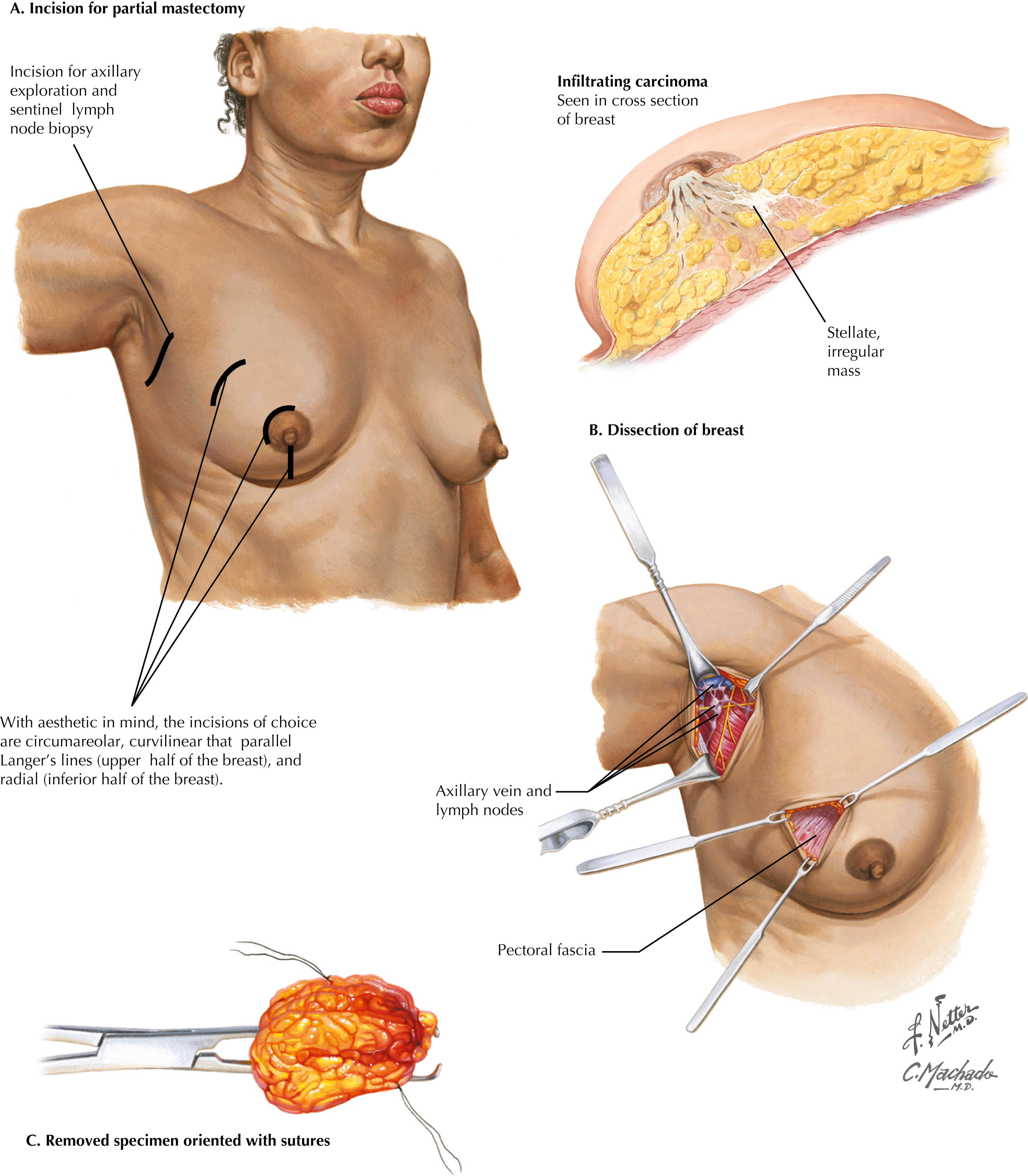Physical Address
304 North Cardinal St.
Dorchester Center, MA 02124
Breast cancer is the most common cancer diagnosed and the second leading cause of cancer mortality in women. Major advances in recent years, including hormonal and monoclonal antibody therapy, have greatly improved outcomes in breast cancer patients. Historically, breast cancer has primarily been a surgically treated disease. In 1894, Halsted (per Dorland’s) and Myers described the landmark radical mastectomy. This operation removes the breast tissue, nipple-areola complex, overlying skin, and pectoralis major and minor muscles, in addition to a complete axillary lymphadenectomy. Although the radical mastectomy is effective at improving survival, the procedure carries a high morbidity.
Since then, surgeons have developed techniques to minimize morbidity and maximize survival rates. These procedures include partial mastectomy, simple or total mastectomy, modified radical mastectomy, skin-sparing mastectomy, and nipple-sparing mastectomy. Together these procedures have maintained survival rates in properly selected patients while greatly reducing the morbidity of the Halsted radical mastectomy. The approach to surgical intervention is made on the basis of tumor size in relation to breast size, multifocal disease, bilateral disease, specific pathological considerations of the tumor, the patient’s germline genetic status, and patient preference. This chapter addresses the most common surgical interventions: the partial mastectomy and total mastectomy.
Breast-conserving surgery (i.e., partial mastectomy, lumpectomy, tylectomy, wide local excision, segmental mastectomy) can be considered for early stage disease (i.e., stages 0, I, and II). When combined with radiation therapy for properly selected patients, breast-conserving surgery has the same survival rate as modified radical mastectomy. Partial mastectomy is increasingly used because the oncologic outcomes are also the same, while improving aesthetics, quality of life, and psychological impact on the patient.
Partial mastectomy is often performed with axillary sentinel lymph node biopsy (SLNB) when the diagnosis of invasive cancer is made. Partial mastectomy can also be performed without SLNB for patients with noninvasive breast cancer, ductal carcinoma in situ (DCIS).
With breast conservation and aesthetics the focus of partial mastectomy, the choice of incision is of great importance ( Fig. 55.1A ). Circumareolar incisions provide good cosmesis. Curvilinear incisions that parallel Langer’s lines of tension in the upper half of the breast also work well. In the inferior half of the breast, radial incisions provide good cosmesis. For palpable lesions, the incision should be made directly over the tumor. For nonpalpable tumors localized with a wire or other wireless localizing technologies (e.g., radioactive seed), care should be made to make the incision over the expected location of the tumor.

Small skin flaps are raised, and then dissection can be performed sharply or with electrocautery. Breast tissue can be grasped with an Adair clamp to facilitate dissection, but care should be used to avoid tearing or crushing the tissues ( Fig. 55.1B ).
Current guidelines recommend removal of invasive cancers with clear margins (i.e., no tumor on ink). Once removed, the specimen must be oriented so that if a margin is positive, an accurate margin re-excision can be performed ( Fig. 55.1C ).
Depending on the size of the breast and the size of the specimen being resected, oncoplastic techniques may be used. For large specimens that may cause dimpling of the skin or obvious deformity, rotation of a portion of breast tissue into the cavity may improve aesthetics. Also, for large breasts and a large specimen, breast reduction techniques in conjunction with partial mastectomy may be used to preserve symmetry and/or achieve desired cosmetic results.
Become a Clinical Tree membership for Full access and enjoy Unlimited articles
If you are a member. Log in here